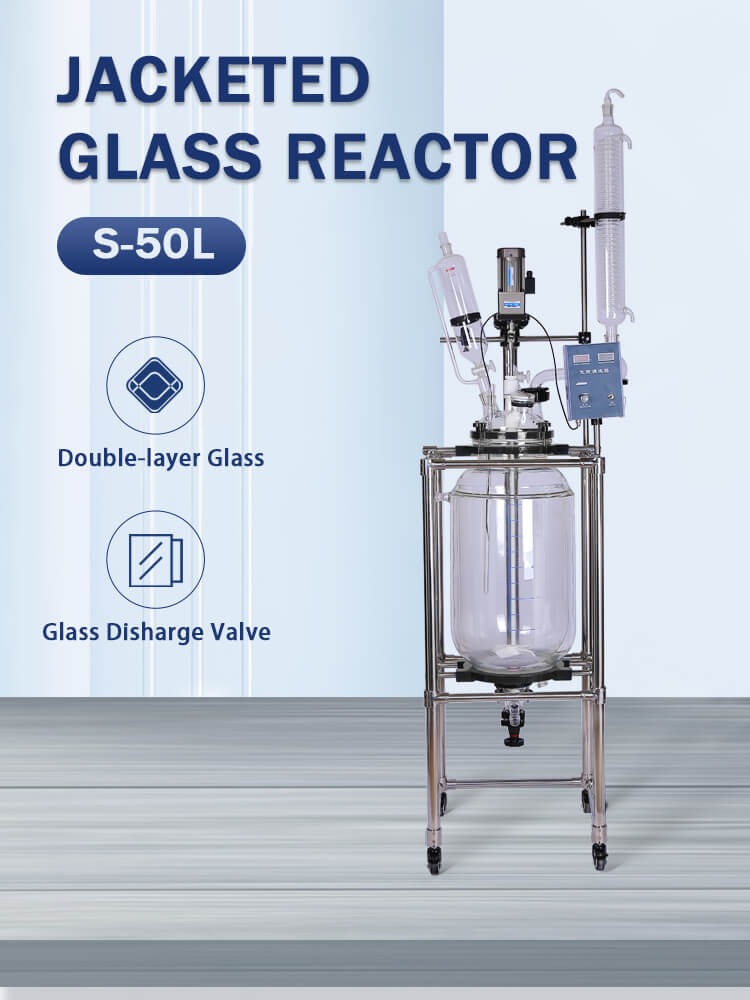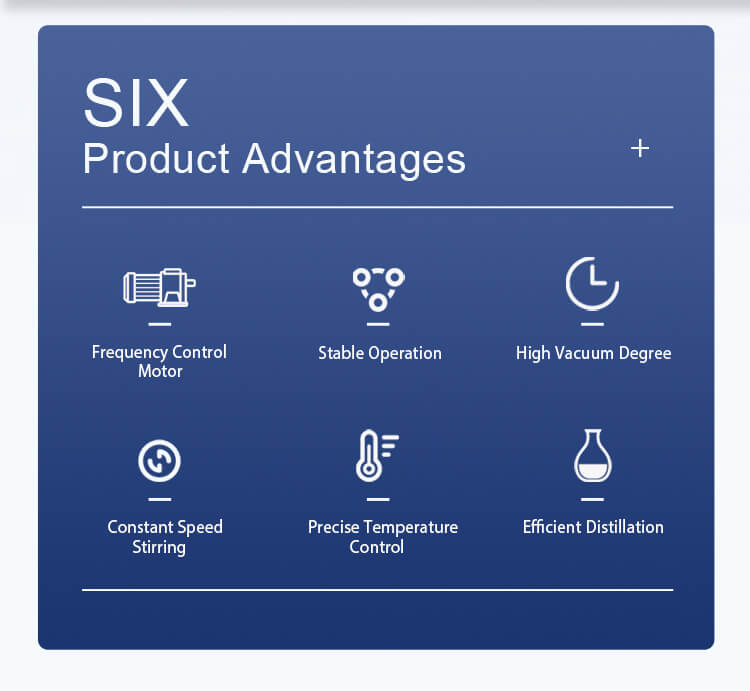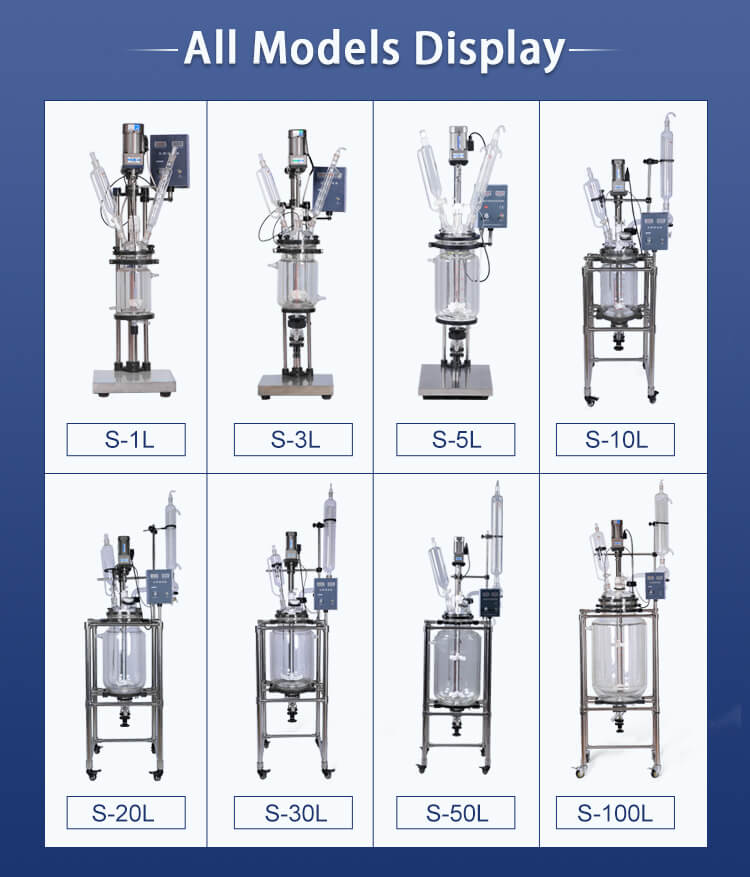In the world of chemical and pharmaceutical industries, innovation and precision are paramount. One integral component that has revolutionized these sectors is the glass cylindrical reactor. With a density ranging between 0.5% and 3%, these reactors have become an essential tool for various processes. This article delves into the features, applications, advantages, and considerations of 50l jacketed glass reactor, showcasing their vital role in modern laboratory settings and industrial operations.
Understanding Glass Cylindrical Reactor
Glass cylindrical reactor, known for their robust design and transparent walls, have emerged as a cornerstone in laboratory equipment. Their density, ranging between 0.5% and 3%, allows for efficient handling of diverse chemical reactions and pharmaceutical processes. These reactors are meticulously crafted by companies like ZZKD Machinery and Instrument Equipment Co., Ltd., which holds over 13 years of experience in producing high-quality laboratory equipment.
Design and Structure
Glass cylindrical reactor feature a cylindrical body crafted from premium borosilicate glass, renowned for its exceptional chemical resistance and thermal stability. The cylindrical shape maximizes heat transfer efficiency and ensures uniform mixing during reactions.
Transparent Advantages
The transparency of glass reactors grants researchers and operators a real-time view of ongoing processes. This visual monitoring helps detect any anomalies, ensuring timely adjustments and safer operations.
Flexibility and Customization
Manufacturers like ZZKD offer customizable options for glass cylindrical reactor, tailoring them to specific client needs. From varying densities to specialized fittings, these reactors provide the flexibility required for a wide range of applications.

Applications of Glass Cylindrical Reactor
Glass cylindrical reactor find utility in an array of chemical and pharmaceutical applications, thanks to their adaptable nature and precise control over reaction conditions.
Chemical Synthesis
The reactors excel in chemical synthesis, facilitating reactions that demand precise temperature and pressure controls. From organic compound synthesis to polymerization processes, the transparency of the glass walls aids in monitoring color changes and phase transitions.
Pharmaceutical Development
In pharmaceutical research and development, glass cylindrical reactor play a pivotal role. They enable researchers to optimize drug synthesis, study reaction kinetics, and enhance overall process efficiency. The transparency is particularly beneficial for observing crystallization processes.
Essential Oil Extraction
Glass cylindrical reactor find a place in the extraction of essential oils from botanicals. The controlled environment ensures that heat-sensitive compounds are preserved, resulting in high-quality extracts.
Advantages of Glass Cylindrical Reactor
Glass cylindrical reactor offer a plethora of advantages that contribute to their widespread adoption across industries.
Corrosion Resistance
The borosilicate glass construction imparts remarkable resistance to corrosion from various chemicals, ensuring the integrity of the reactor even during aggressive reactions.
Thermal Stability
Glass cylindrical reactor can withstand a wide range of temperatures, making them suitable for both high-temperature reactions and cryogenic processes.
Ease of Cleaning and Maintenance
The smooth surface of the glass interior facilitates easy cleaning and prevents residue buildup. This feature is crucial for maintaining the purity of subsequent reactions.

Consideration and Safety Measures
While glass cylindrical reactor offer numerous benefits, several considerations and safety measures must be taken into account.
Temperature and Pressure Limits
Operating conditions must align with the reactor’s temperature and pressure limits to prevent glass breakage. Adequate insulation and pressure relief systems are essential safeguards.
Mechanical Stress and Stirring
Vigorous stirring or sudden temperature changes can subject the glass to mechanical stress. Proper stirring mechanisms and gradual temperature adjustments are vital to avoid fractures.
Protective Gear and Training
Operators must be equipped with appropriate protective gear such as safety goggles and gloves. Training on reactor operation and emergency protocols is crucial to ensure safe handling.

Future Trends and Innovations
The realm of glass cylindrical reactors continues to evolve with advancements in materials and technology.
Advanced Materials
Researchers are exploring the use of advanced glass compositions and coatings to enhance the reactors’ chemical resistance and durability, expanding their potential applications.
Automation and Control
The integration of automation and sophisticated control systems is on the horizon, allowing for remote monitoring, data collection, and precise regulation of reaction parameters.
Sustainable Practices
Manufacturers like ZZKD are increasingly focusing on sustainability by implementing energy-efficient designs and recyclable materials, aligning with global efforts toward greener technologies.
Conclusion
Glass cylindrical reactors, with their density between 0.5% and 3%, stand as a testament to innovation and precision in laboratory equipment. Their transparent design, diverse applications, numerous advantages, and ongoing innovations underline their significance in chemical and pharmaceutical industries. As technology progresses, these reactors will undoubtedly continue to shape the future of research, development, and production processes, propelling the realms of chemistry and pharmaceuticals toward greater efficiency and safety.
